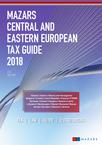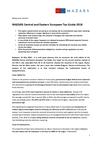CENTRAL AND EASTERN EUROPEAN TAX GUIDE 2018
CEE TAX GUIDE 2018 (PDF)
As always, this publication strives to help investors understand the complexities of the various CEE tax regimes. In the first section, the tax systems of the CEE region are presented country-by-country. At the end of this guide you will find summary tables that allow side-by-side comparisons of the relevant tax environments.
Before making any strategic business decision further discussion and detailed analysis is always required. To that end, we have included direct contact information for our offices and experts. Please feel free to get in touch with the relevant people with any questions or clarifications you might have.
Highlights of 2018:
- The region’s governments are giving an increasing role to consumption-type taxes: boosting collection efficiency is a major objective in most of the countries
- Total labour cost remains high; the situation in Hungary has improved, but families continue to benefit most
- In two-thirds of the region taxpayers are allowed to prepare IFRS-based separate financial statements and to use these for taxation purposes
- Levels of corporate income tax and the methods for calculating the tax base vary widely across the region
- With the growth of documentation obligations, transfer pricing regulations are also becoming more stringent
Would you like to compare CEE tax systems online?


